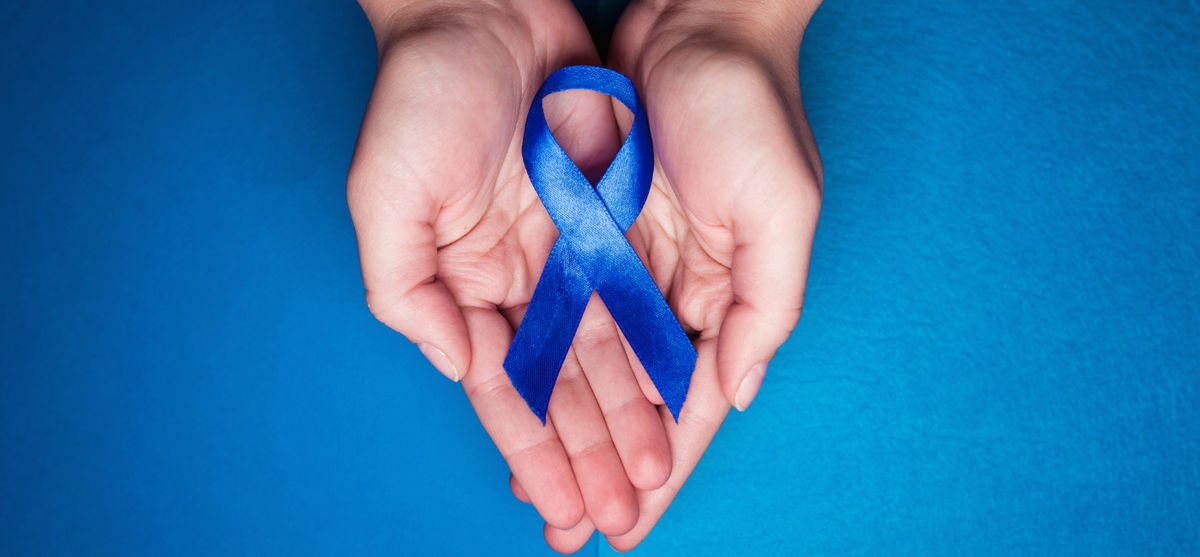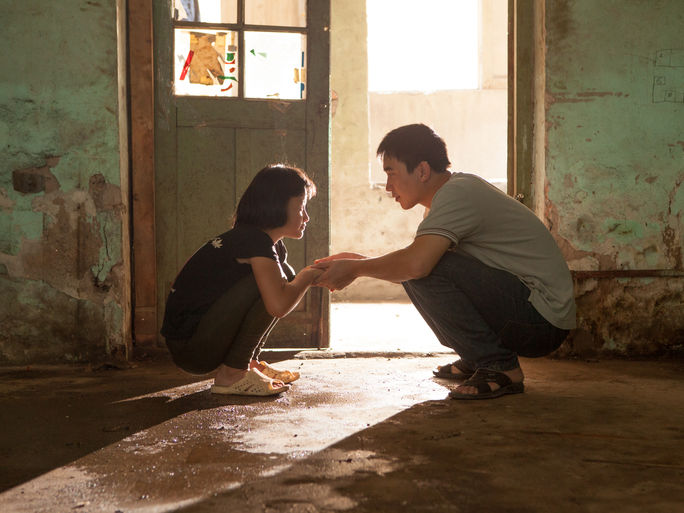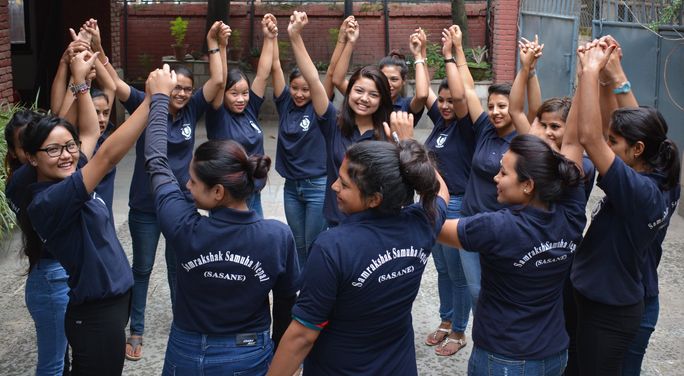The Connection Between the Travel Industry and Human Trafficking, and What It’s Doing to Stop It

Human trafficking might not be an eye-catching buzzword, but it remains an important global issue that hurts millions of vulnerable people across the globe each year—including in your own hometown.
Today is the United Nations’ World Day Against Trafficking in Persons, and this year’s theme is “Leave No Child Behind in the Fight Against Human Trafficking.” It’s an important theme, as one in three victims of human trafficking is a child.
As we raise awareness for this global issue and seek to address ways to end it, let’s learn a bit about the connection between human trafficking and the travel industry, how travel is being used as an unwilling vehicle for trafficking, and how the travel industry around the world is taking a stand against human trafficking.
What is Human Trafficking?
The International Labour Organisation estimates that 27.6 million men, women and children are trafficked worldwide each year, including in the United States.
The National Human Trafficking Hotline, which is run by the Polaris Project, reported 10,359 trafficking situations across the United States in 2021. Within these, 16,554 likely victims of human trafficking were identified.
The United Nations’ Palermo Protocol, created in 2000, defines human trafficking as “the recruitment, transportation, transfer, harboring or receipt of persons, by means of the threat or use of force or other forms of coercion, of abduction, of fraud, of deception, of the abuse of power or of a position of vulnerability or of the giving or receiving of payments or benefits to achieve the consent of a person having control over another person, for the purpose of exploitation. Exploitation shall include, at a minimum, the exploitation of the prostitution of others or other forms of sexual exploitation, forced labor or services, slavery or practices similar to slavery, servitude or the removal of organs.”
Human trafficking can occur for a variety of reasons, though typically people connect it with prostitution or sex servitude. Other forms of trafficking might include forced labor, organ removal, debt bondage and forced marriage. In any case, it’s in direct violation of human rights.
The Polaris Project states that risk factors for being trafficked include “recent migration or relocation, substance use, mental health concerns, involvement with the child welfare system and being a runaway or homeless youth.”
Human Trafficking & The Travel Industry
Now you might be wondering: what does human trafficking have to do with the travel industry?
The World Travel & Tourism Council’s “Preventing Human Trafficking” report states that the travel industry is “unwittingly used for human trafficking as traffickers transport their victims on planes, trains and buses and book hotel rooms to exploit vulnerable individuals.”
ECPAT International’s paper on the connection between human trafficking of children and the tourism industry found that newer, less regulated accommodations and experiences provide an increased risk for the human trafficking of children, especially.

The Intrepid Foundation’s Blue Dragon Marathon supports victims of human trafficking. (Photo Credit: Matthew Dakin)
“…recent years have seen the increasing emergence of more informal tourism services like home-stays, longer-term rentals, smaller hotels and so-called ‘party hostels’ (often run remotely),” the report states. “The misuse of traditional travel and tourism infrastructure for SEC continues to be documented, but offenders have also moved to less-regulated domains such as the above-mentioned, thus making their crimes harder to detect.”
“Forms of completely unregulated tourism such as ‘slum tourism’, eco-tourism, community tourism that gives access to local groups including indigenous people, or sharing-economy practices such as home- or car-sharing via tech platforms, have raised new risks.”
Additionally, some destinations’ tourism drivers directly encourage trafficking, such as in Thailand. According to Exodus Road, there are 600,000 human trafficking victims in Thailand, the majority from agriculture and sex trafficking.
As prostitution is legal in Thailand, travelers visiting destinations like Bangkok to engage in prostitution directly support sex trafficking in Thailand.
The travel industry, then, is an unwilling engine enabling human trafficking to occur across the globe—yet it’s also perfectly positioned to fight against trafficking.
And that’s exactly what it’s been doing.
The Fight Against Human Trafficking Around the World
The travel industry is fighting against human trafficking at all levels, from grassroots initiatives to some of the largest travel companies in the world.
Some of the initiatives are simple, like The Intrepid Travel Foundation’s Blue Dragon Marathon Fundraiser, which raised $216,000 for the Blue Dragon Children’s Foundation in Vietnam, which supports child victims of human trafficking.
Others are far-reaching. Marriott is one of the most recognizable names in travel, and the global corporation’s human trafficking awareness training has been used by 1.3 million of its associates by the second quarter of this year. Marriott has an ambitious goal to train all of its on-property staff across the globe in how to identify and respond to potential human trafficking events by 2025.
The global hospitality corporation’s training was donated to PACT with support from the American Hotel and Lodging Association, making it accessible to any member of the hospitality industry. By the beginning of this year, over 1.6 million people used the training through PACT.
Yet some travel companies are fighting human trafficking at its source: SASANE Sisterhood Trekking & Travels was founded by Jeny Pokharel in 2016 and began as a way to empower survivors of human trafficking in remote areas of Nepal by taking advantage of the country’s growing tourism industry.
The tour operator takes travelers on tours across Nepal, led by 33 trained trekking guides who are also survivors of human trafficking. To-date, the tour operator has trained over 300 survivors of human trafficking in hospitality-related careers and has received several awards for its work, including a 2023 TODO Award for Human Rights in Tourism.
Pokharel explains why this is so important: “Each year, an estimated 30,000 Nepali girls are tricked, coerced, abducted or willingly sold by their families into sexual slavery or forced labor. These girls have little to no education or employment opportunities and are often between 14-16 years old or younger. They live in remote villages in Nepal (accessible only by trekking and treacherous mountain roads) before they are trafficked into big cities in India and Nepal.”
“These young girls are forced to work as prostitutes in brothels or forced labor until they are too sick to work, then they are left to die in dangerous city streets. Months or years later some of these women are rescued, escape or somehow manage to survive. They are Nepal’s survivors.”
The benefits are twofold: “Travelers who travel with SASANE know that they are making a social impact with their choice to travel with us,” said Pokharel. “They are our travel warriors helping to combat human trafficking and making a substantial impact on the lives of so many Nepali survivors. Not only do they get to contribute to our mission, but they get to meet the survivor women personally and be as inspired as we are by their strength, courage and resilience.”

SASANE Sisterhood Trekking & Travels directly supports human trafficking survivors by employing them as guides and providing training for careers in the tourism industry. (Photo Credit: SASANE Sisterhood Trekking & Travels)
“Moreover, travelers and survivors exchange communication, further strengthening survivors’ motivation level and ensuring practical experience. Travelers too receive an opportunity to understand the ratio, pattern and modus operandi of trafficking, creating awareness among their acquaintances and providing assistance in whichever way possible for its eradication.”
The global travel industry is fighting against human trafficking in many ways, from awareness and training initiatives to companies working to empower survivors.
But what about human trafficking closer to home?
The Fight Against Human Trafficking Closer to Home
The travel industry in the United States is also fighting against human trafficking, and it often all boils down to cutting off human trafficking as it happens through awareness and mitigation, and then through the empowerment of survivors.
We learned before how Marriott’s training program has helped over a million associates learn how to identify and respond to potential trafficking, yet it doesn’t stop there.
In 2018, Marriott became the first corporate partner of the Global Fund to End Modern Slavery to establish a hospitality training curriculum for survivors of human trafficking. Since 2022, the curriculum has trained 64 survivors, and expansion of the program with the University of Maryland SAFE Center will train up to 150 survivors by July 2024.
Destinations are also supporting anti-trafficking initiatives: Experience Scottsdale offers free staff training through the SAFE Action Project, created for tourism and hospitality professionals by the Arizona Anti-Trafficking Network, the Arizona Attorney General’s Office and Homeland Security Investigations.
According to the Arizona Anti-Trafficking Network, there’s a direct need for the travel industry to get involved: 25 percent of human traffickers rented hotel rooms for their victims, and 57 percent of survivors were trafficked in hotel rooms in Arizona.
The American Hotel & Lodging Association (AHLA) advocates for laws to mitigate human trafficking and support victims, such as the recently introduced Human Trafficking Awareness Training Recognition Act, which requires the DHS to establish a certification program for businesses to train employees in recognizing and responding to human trafficking.
Additionally, the AHLA Foundation has partnered with PACT and Marriott to distribute free trafficking prevention training to hotel employees through its No Room for Trafficking (NRFT) initiative.
It’s also raised $3.7 million since 2022 for the industry’s first-ever Survivor Fund, which provides grants to local nonprofits across the nation that support human trafficking survivors. So far, the grant money has supported four organizations that provided emergency services to 643 survivors, employment coaching and training for 514 survivors and non-exploitative employment training for 66 survivors.
“Our industry is uniquely positioned to observe and disrupt human trafficking, and our employees can sometimes play a key role in these prevention efforts,” said Anna Blue, AHLA Foundation’s President. “Bigger picture, this isn’t about hotels, it’s about people. It’s critical that people understand that the training we offer as an industry – an overview and basic indicators of human trafficking and some of the signs and signals – really applies no matter where you are. Everyone is eyes and ears.”
“The fight to end human trafficking has no finish line; raising awareness and training is an ongoing commitment by our industry and part of the culture we have built. We can do more together than we can apart – collective impact and collaboration is the key to lasting change.”
The Bottom Line
The travel industry has an important role to play in mitigating human trafficking around the world.
As travelers, we can choose not to participate in activities that enable trafficking and instead support businesses and nonprofits that empower survivors across the globe.
As members of the industry, we can educate ourselves on how to identify human trafficking, how to respond to it and use what we learned to increase awareness to others in the industry and beyond.
Saving people doesn’t need to be a heroic effort. The fight against human trafficking continues with you: how will you answer the call?
For the latest travel news, updates and deals, subscribe to the daily TravelPulse newsletter.
Topics From This Article to Explore
Related
Turkish Airlines and Qatar Airways Suspend Mogadishu Flights Following US…
Home » Airlines News of Qatar » Turkish Airlines and Qatar Airways Suspend Mogadishu Flights Following US Embassy Terror Alert, Raising Security Concerns at
Local tourism destinations grow fast
Men sit at the Doha Corniche backdropped by high buildings in Doha on March 3, 2025. Photo by KARIM JAAFAR / AFP DOHA: Local tourism destinations are g
Hajj, Umrah service: Qatar Airways introduces off-airport check-in for pilgrims
Image credit: Supplied Qatar Airways has introduced an off-airport check-in
IAG, Qatar Airways, Riyadh Air, Turkish Airlines, Lufthansa & more…
Turkish Airlines – a Corporate Partner of the FTE Digital, Innovation & Startup Hub – is charting a course to rank among the top 3 global airlines for












